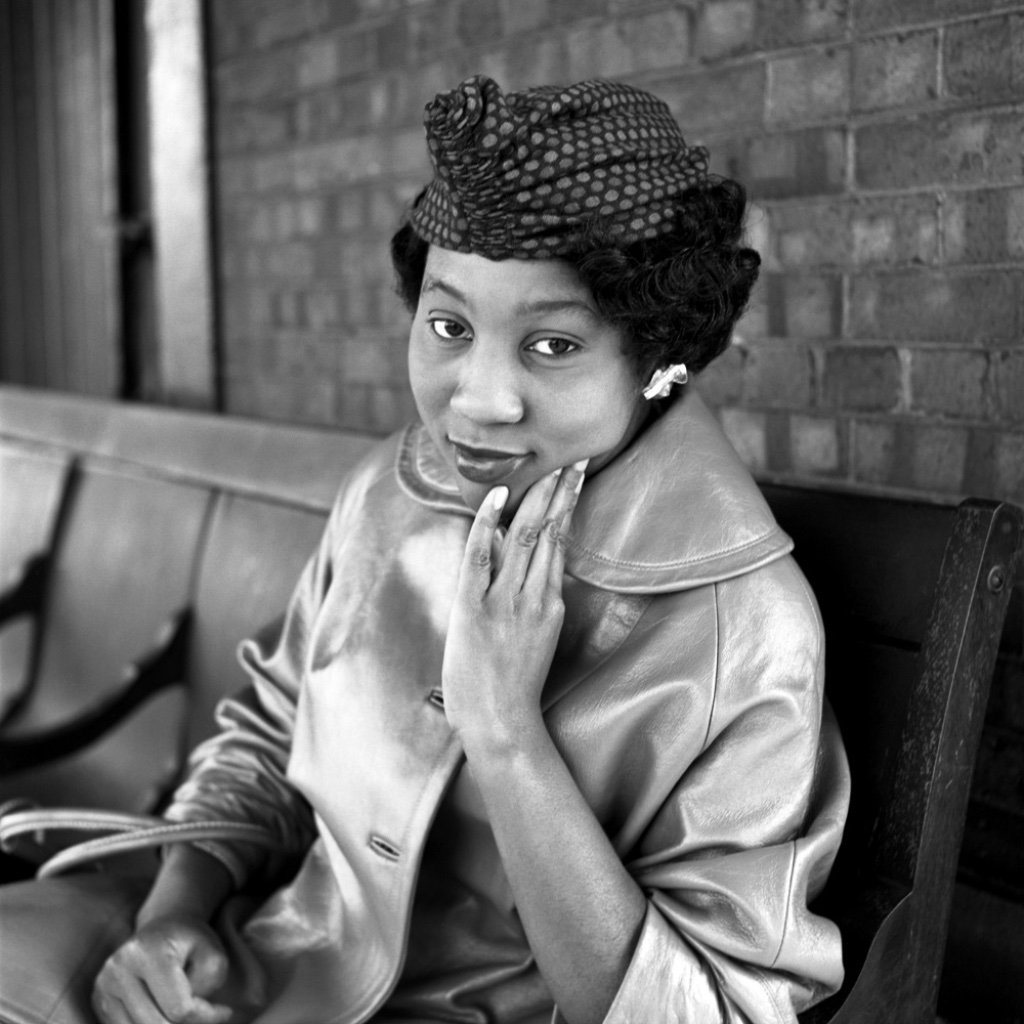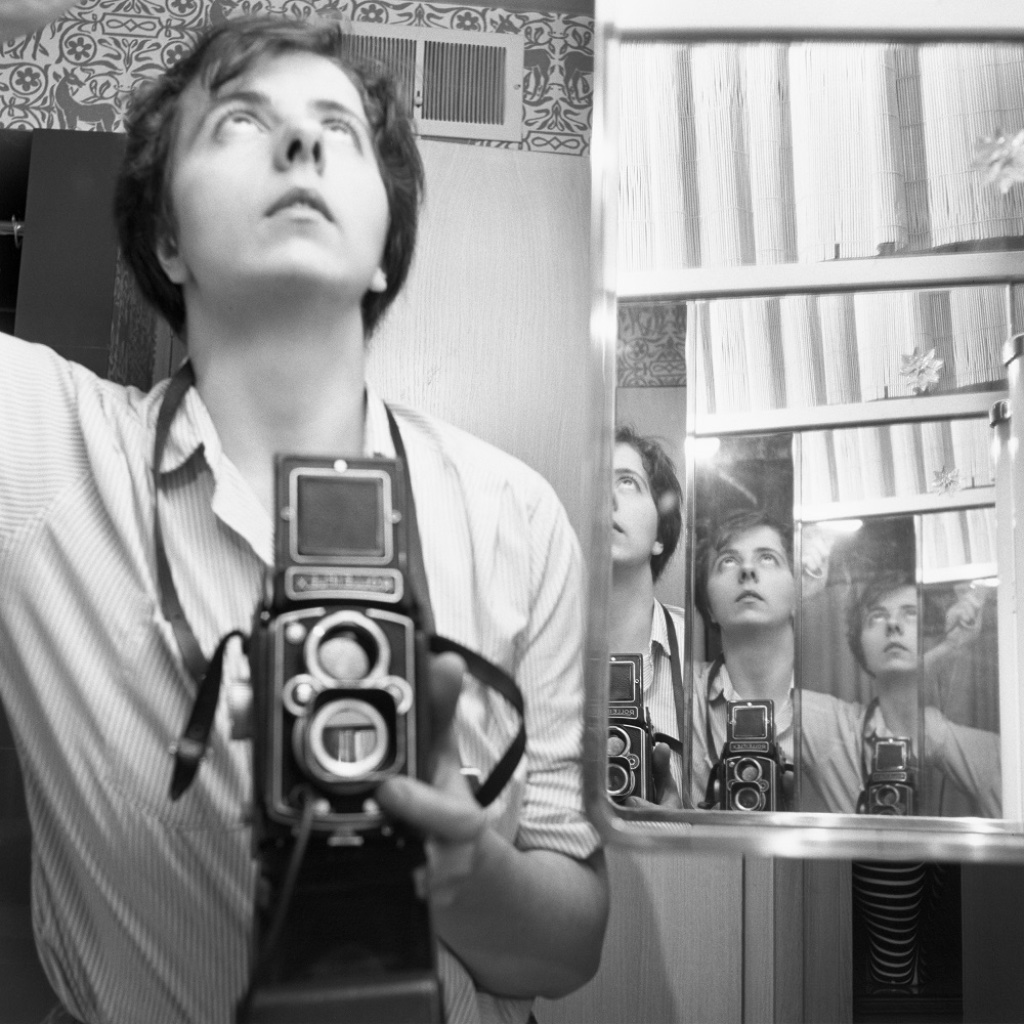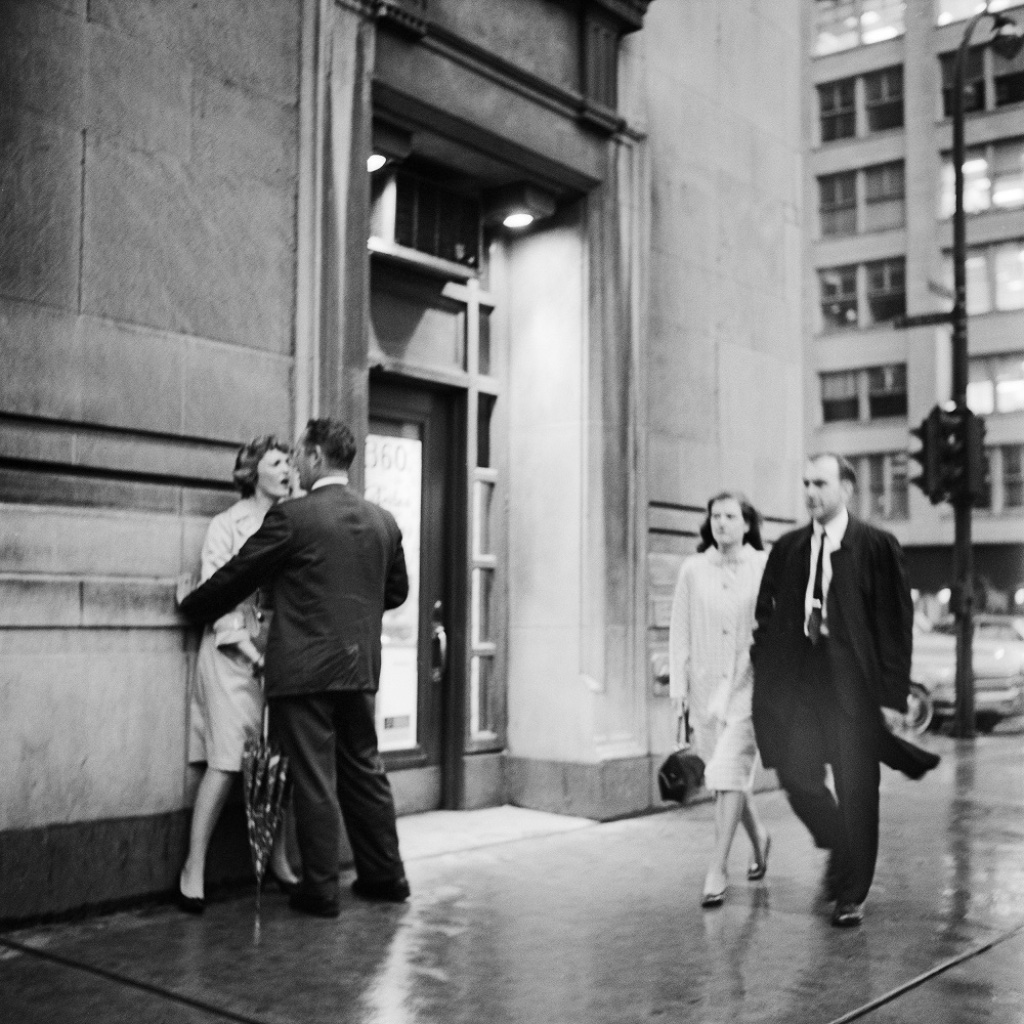
Who hasn’t yet heard of Vivian Maier, nanny by profession, photographer by avocation? Her story is so unusual and her photographs so good that she never ceases to fascinate. Now the Musée de Luxembourg is holding what is apparently the largest show ever of the work of this enigmatic woman, who has become something of a posthumous cult figure.
A brief summary of her biography: born of a French mother and an Austrian father (who soon disappeared from her life) in New York in 1926, Maier was probably taught to use a camera by her mother’s friend, photographer Jeanne Bertrand. To earn her living, she became a nanny, a profession that wouldn’t keep her locked up in an office all day.

With her young charges in tow, she roamed the streets of Chicago and New York, snapping pictures with her Rolleiflex, shooting thousands and thousands of rolls of film over the years but rarely developing them or showing them to anyone. Why? No one really knows. She was a private, even secretive person who seems to have felt comfortable only with children. It sounds like a sad story, but the exhibition leaves you with the impression that Maier was living the life she wanted to live, although we will never really know.
Her photos only came to light a couple of years before she died (in 2009, at the age of 83) when boxes and boxes of rolls of undeveloped negatives were auctioned off because the rent had not been paid on the storage locker where they had been kept. One of the curious buyers was a man named John Maloof, who bought some of the boxes and began to scan the negatives. Realizing their worth and fascinated by the mysterious woman who had shot them, he launched an investigation into her life, which culminated in the 2014 documentary Finding Vivian Maier.

What did Maier photograph? Anything that caught her attention in the street, often without her subjects’ knowledge. The queen of selfies well before her time, she loved to slyly photograph her own reflection, in a car’s side-view mirror, for instance, or in a shop window, sometimes so subtly that it takes a moment to recognize her in one of the floppy hats she liked to wear (one of which is on display in the show).
These are not your ordinary snapshots. Maier was an expert at clicking the shutter at what Henri Cartier-Bresson called the “decisive moment,” when a photographer simultaneously recognizes “in a fraction of a second … the significance of an event as well as a precise organization of forms that give that event its proper expression.” The shot of the two couples above, one walking peaceably down the street, the other vehemently arguing, is a good example. This ability has earned her critical admiration and comparisons with such great photographers as Robert Frank and Diane Arbus. And, judging by the few contact prints on display in the exhibition, her fine-tuned eye was able to frame images in the camera, obviating the need to crop the final picture.

Maier also had a fine-tuned sense of the absurdity of life and was able to find both the pathos and the humor in the situations she saw in the street. As I wandered through the exhibition, I had to laugh out loud at many of the images and heard many other visitors chuckling around me.
If you haven’t yet caught Maier mania, get thee to this show to see what it’s all about. If you already have it, you will definitely be going.
Favorite
I’m not sure that the one couple are arguing. I note, for example, that her legs are spread and his aren’t. His arms are blocking her, but maybe they are placed just as she would like.
The guys reading the newspaper on the train is a great shot.
I’d love to see the show!
I saw her work at the Campredon Museum in l’Isle sur la Sorgue (Provence) a couple of years ago, it was such a pleasure. I had not heard of her before that visit. I doubt that I’ll be able to get to Paris for the show, but who knows?
bonnie in provence